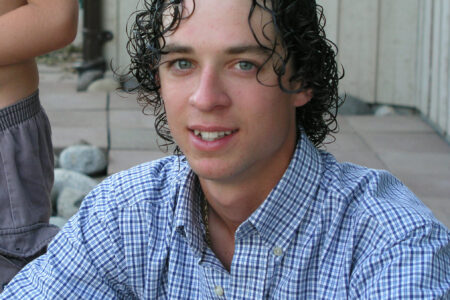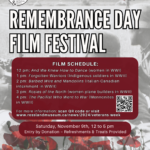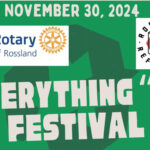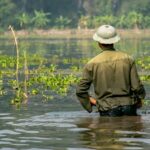Celebrating the West Kootenay Spirit of Innovation and Entrepreneurship
The quadrennial Spirit of Innovation Awards are on again and KAST—the Kootenay Association for Science and Technology, the award organizers—want nominations for individuals, organizations, and businesses whose hard work exemplifies West Kootenay innovation and entrepreneurship.
“The innovation, intellectual capital, and entrepreneurship in our region is truly spectacular for a relatively small population,” said Kelvin Saldern, KAST’s executive director. “Having worked closely with the local business community for years, I’m still regularly surprised when I discover new ideas, businesses, and entrepreneurs doing tremendously high-level and sophisticated things you would not expect to find in a rural, mountainous region.”
The innovation awards were first conceived by KAST eight years ago to celebrate these people’s dogged determination, and have repeated since at four-year intervals.
“We go out across the region and seek nominations in four categories—innovative company, innovative organization, innovative individual, and most promising emerging company,” Saldern said. He explained that “organizations” are non-profit, like NGOs or public sector organizations. “Emerging companies” are startups or company’s who have been in business for fewer than two years.
The nominations are taken to a pre-selected judging panel that’s independent of KAST. “We already have the panel set up,” Saldern said, “and we have what we believe is a good, strong, objective criteria and way of evaluating companies to first filter for the semi-finalists and then get it down to the finalists.”
The whole thing wraps up with an award celebration and gala event with good food, wine, entertainment, and a top notch guest speaker—acclaimed digital tech and marketing specialist Tod Maffin. This year the gala will take place at the Prestige Lakeside Resort in Nelson on Thursday, Oct. 25. The following day will be a business and innovation conference timed to coincide with the awards.
“There are a lot of good stories in the Kootenays,” Saldern said, expecting to be inundated by a wide variety of innovative nominees just like four years ago when there were 30 entries. “We winnowed that down to 16 semi-finalists, and from 16 we got to 4 winners,” Saldern said.
“And they’re all so good!” Kelvin said, anticipating another difficult decision this time around.
“We look for innovation in a product, process, or a system from the company—something they’re doing that’s really different and adds value,” he explained. Of course, that all depends on how you define “innovation” and “value”.
“Innovation is something new, either a reasonably significant evolution or something brand new,” Saldern said. “Value doesn’t have to be monetary value, but it’s not just something clever [but useless] that somebody dreamed up. It has to have value, typically that people would be willing to pay for, but it could be social value; it could contribute to society in some other way.”
There’s more to it, however. “We look for demonstrated commitment from the individual or company,” he said. “This shows up as the amount of time they’ve put into it. How long has it taken them to develop it? How much have they invested in it, in terms of sweat equity or financial equity?”
Nominations are open now and the deadline, Sept. 11, is fast approaching. The online form is available here.
“People can self-nominate or nominations can come from someone else,” Saldern said. “Someone has to put some time into the nomination so we know the story, but there’s a fairly simple process. They have to get a supporter to provide a letter of support. All the data—evidence to weigh against the criteria for judging—has to come with the nomination. We try to keep it simple and not too arduous to get the nomination in. From there, they just go for the ride.”
“Fortunately, we also know a lot of the people out there. But it’s surprising. Last time we had people come out of the woodwork that we didn’t know about, who actually had a business they were launching, but they weren’t connected to KAST.”
“It’s remarkable that in our little region—known historically for logging, mining, smelting, hydroelectric energy production, and now for tourism and services—now has this creative and talented and highly, highly trained population that are doing incredible things,” Saldern mused.
The winner four years ago, and an example Saldern frequently touts, is D-PACE (Dehnel Particle Accelerator Components and Engineering, Inc.) a high-tech firm started in Nelson by Morgan Dehnel, a particle physicist who worked for years at UBC’s TRIUMF nuclear and particle physics laboratory where he established 11 patents.
“Now he’s commercializing that technology and marketing it all over the world,” Saldern said.
“Morgan wanted to live here and do the kind of work he was trained to do, so he built this company,” Saldern said. “They design, engineer, and, in some cases, build components mostly for the medical imaging industry, but also for treating metals, They blast metals and plastics with ions to change their properties. Now he’s got customers in France, US, Japan, and all over the world.”
“It’s just a little team in Nelson that does this stuff—world class applied science development, ” Saldern said.
Saldern admits that the D-PACE example is a “kind of extreme,” but assures potential nominees that the categories and criteria are far broader than particle physics, and go beyond high tech as well.
There are bound to be Information Technology and digital media entries he said, giving the recent Life Cycles movie as a “fantastic example of the creative application of new imaging technologies,” but he brought up other pertinent examples of innovation as well.
“There’s a lot of innovation going on outside the tech sector, in traditional sectors,” he said. Awards could go to individuals and organizations involved in retail, tourism, or primary resource extraction, to name a few. “Innovation is critical to any business in any sector,” Saldern explained.
“Certainly from the standpoint of how an economy grows and is sustainable, the ability to adapt to change rapidly becomes more and more critical. Change is a constant, and it’s happening faster and faster.”
Although the business “did not have a lot of commercial success, and was not a winner last time,” Saldern pointed to a company out of Nakusp who manufactured a bag for cherry trees. “It’s an organic way, instead of spraying, to prevent cherries from getting infested by worms,” he said.
“It sounds really simple, but the amount of effort that went in was huge—time, sweat equity, and money to create many prototypes,” he said. “What’s the exact mesh size that’s going to be optimal for this, so you still get rain and light through it that’s best for the tree, but still excludes the fly? How are you going to make it strong enough that you can drape it over a tree without puncturing it full of holes every time you use it?”
Impressed by the ingenuity, effort, and innovation that went into the product, Saldern’s family bought a bag for their cherry tree at home and use it successfully.
Social innovation is in the picture too. For this, Saldern holds up Nelson’s Centre for Innovation and Entrepreneurial Leadership (CIEL) run by Mike Stolte.
“It’s a small non-proft that develops really innovative planning templates and processes that are used all over the world,” Saldern said. “Mike consults all over the world in community and development, and applying his community vitality index. The [template] is both a tool—the index—and the process he goes through with the community.”
“He works with a group of stakeholder citizens and works them through this vitality process. They establish on an index what the community vitality is on a variety of criteria. From that, identify strengths and weaknesses and use in a strategic planning exercise after that,” Saldern said. “It’s a lens to look at community.”
(Stolte is currently involved as the facilitator of Rossland’s “Gateway Project,” which is not a pipeline but rather the concept for an expanded visitor centre and attraction at the Rossland Museum to help compensate for the recent closure of the mine tour.)
It’s early in the nomination proccess, but a few are already in. “They’re ones I expected,” Saldern said, “no surprises yet, but I am excited to see what comes in. KAST has worked with a lot of very interesting people and companies on some of their technology and innovation development. And I look forward to what comes out of the woodwork too.”
Learn more about the Spirit of Innovation Awards here. The online nomination form is available here. KAST can be contacted for more information by email—info@kast.com—by phone—(250) 483-5052—by mail—Box 119, Rossland BC V0G 1Y0—or on their website: www.kast.com.

























